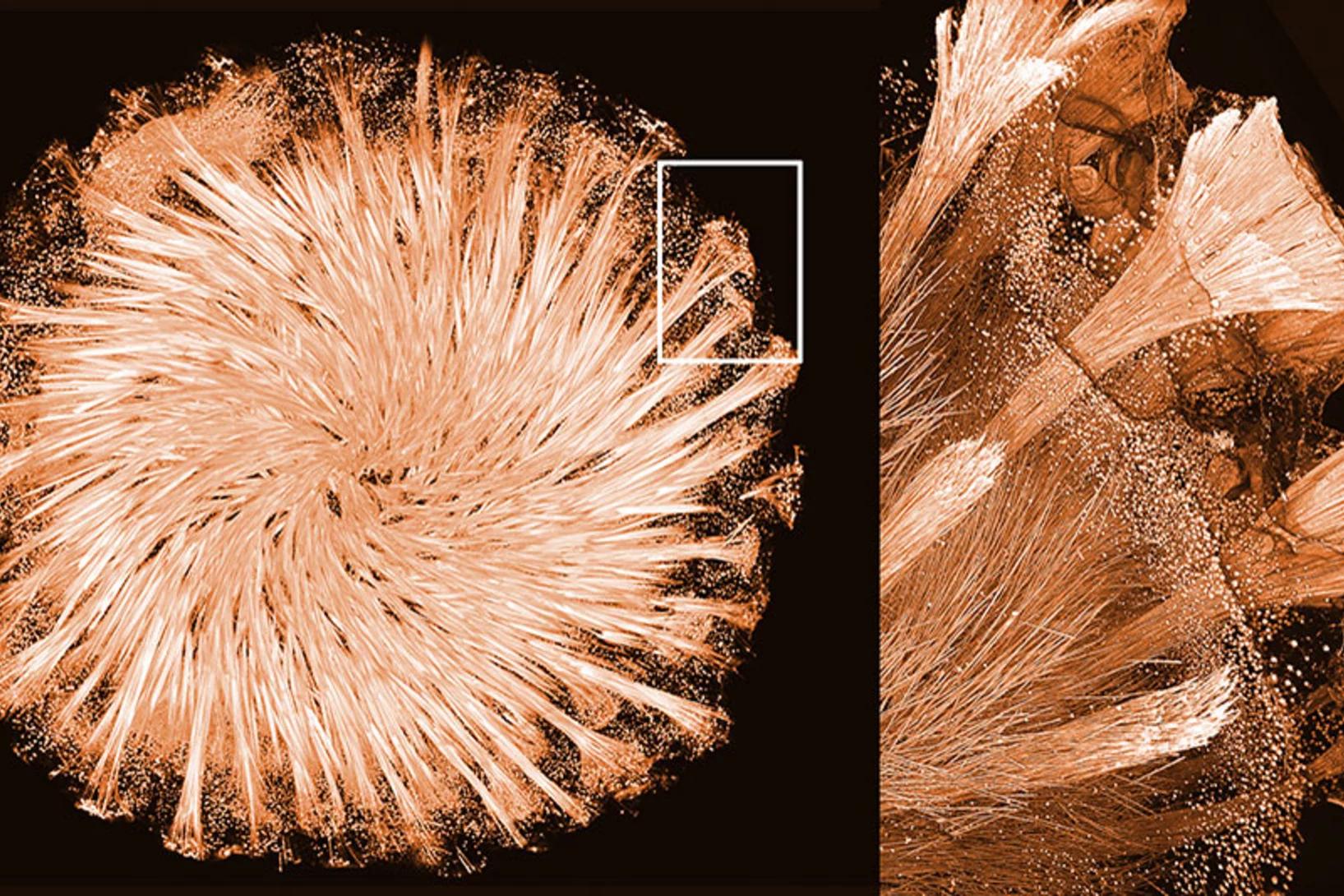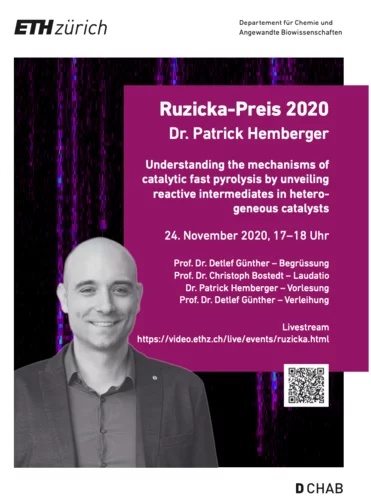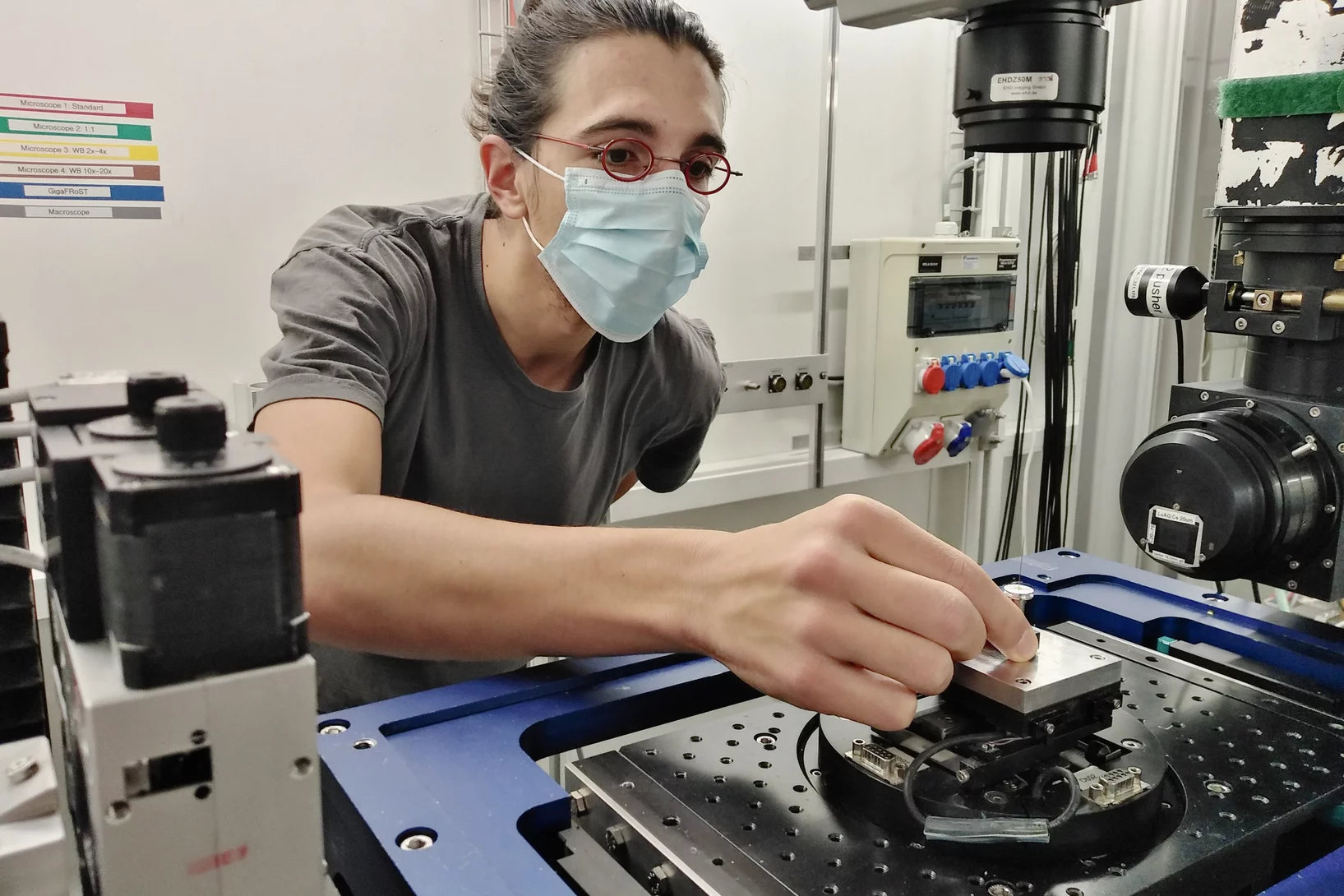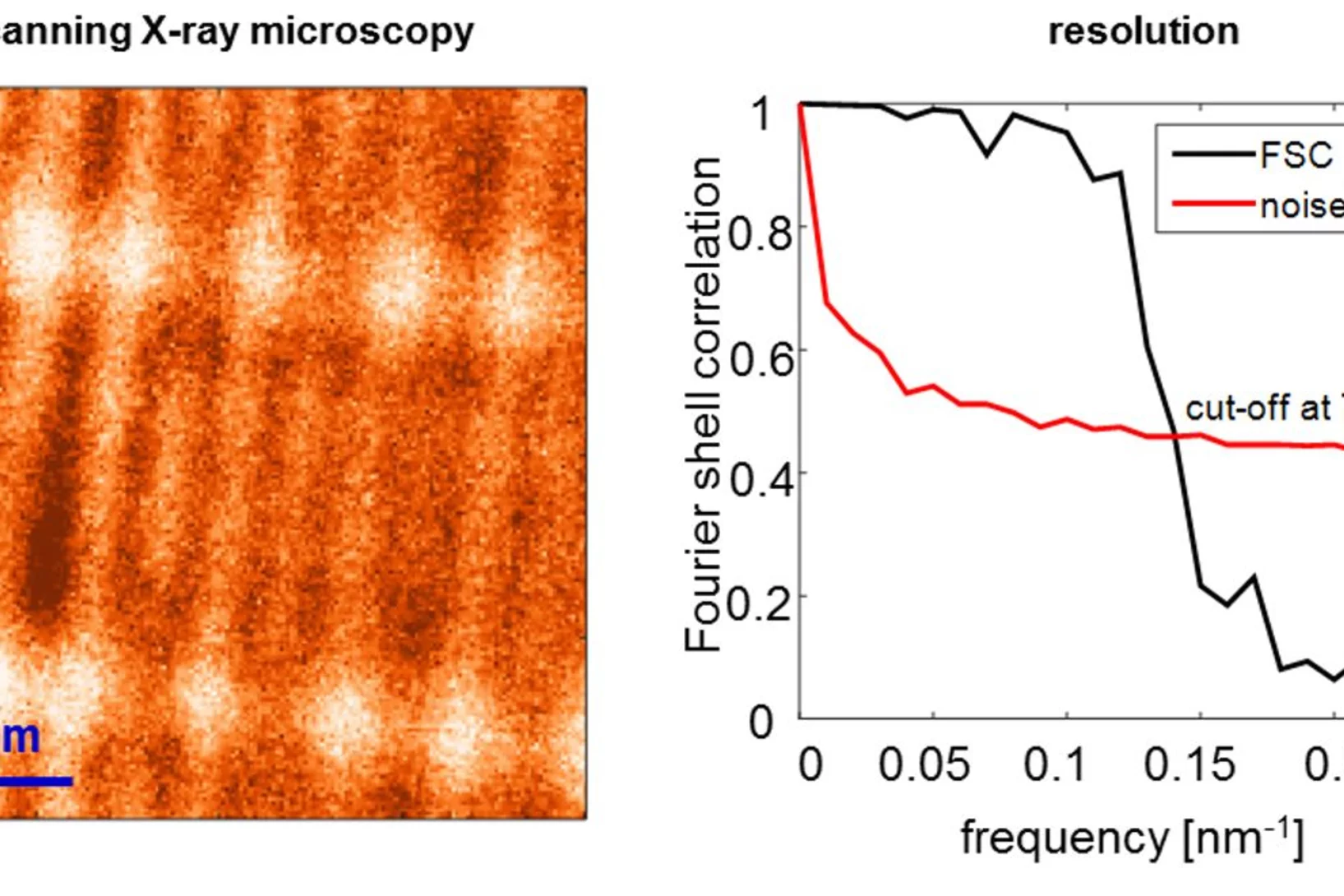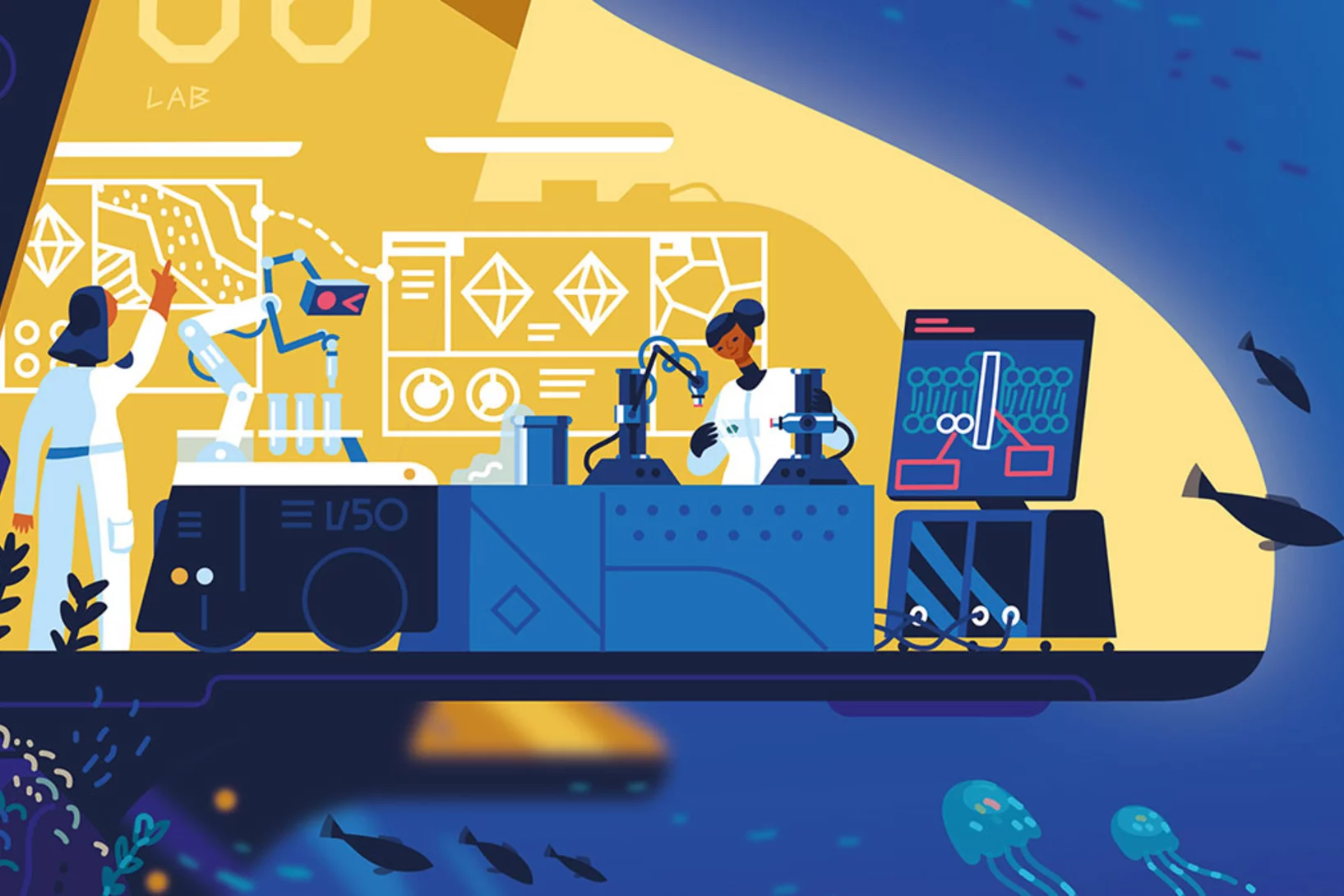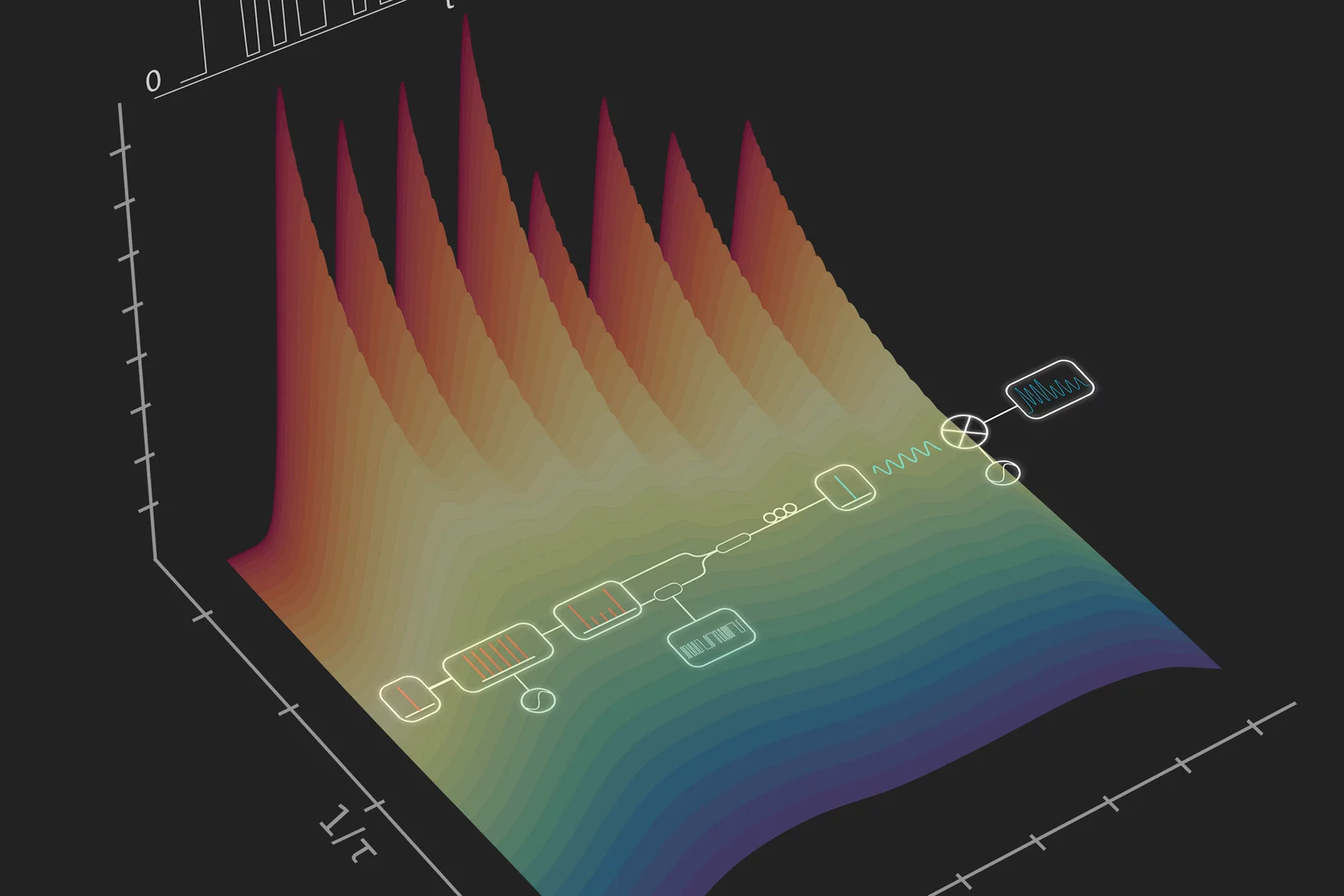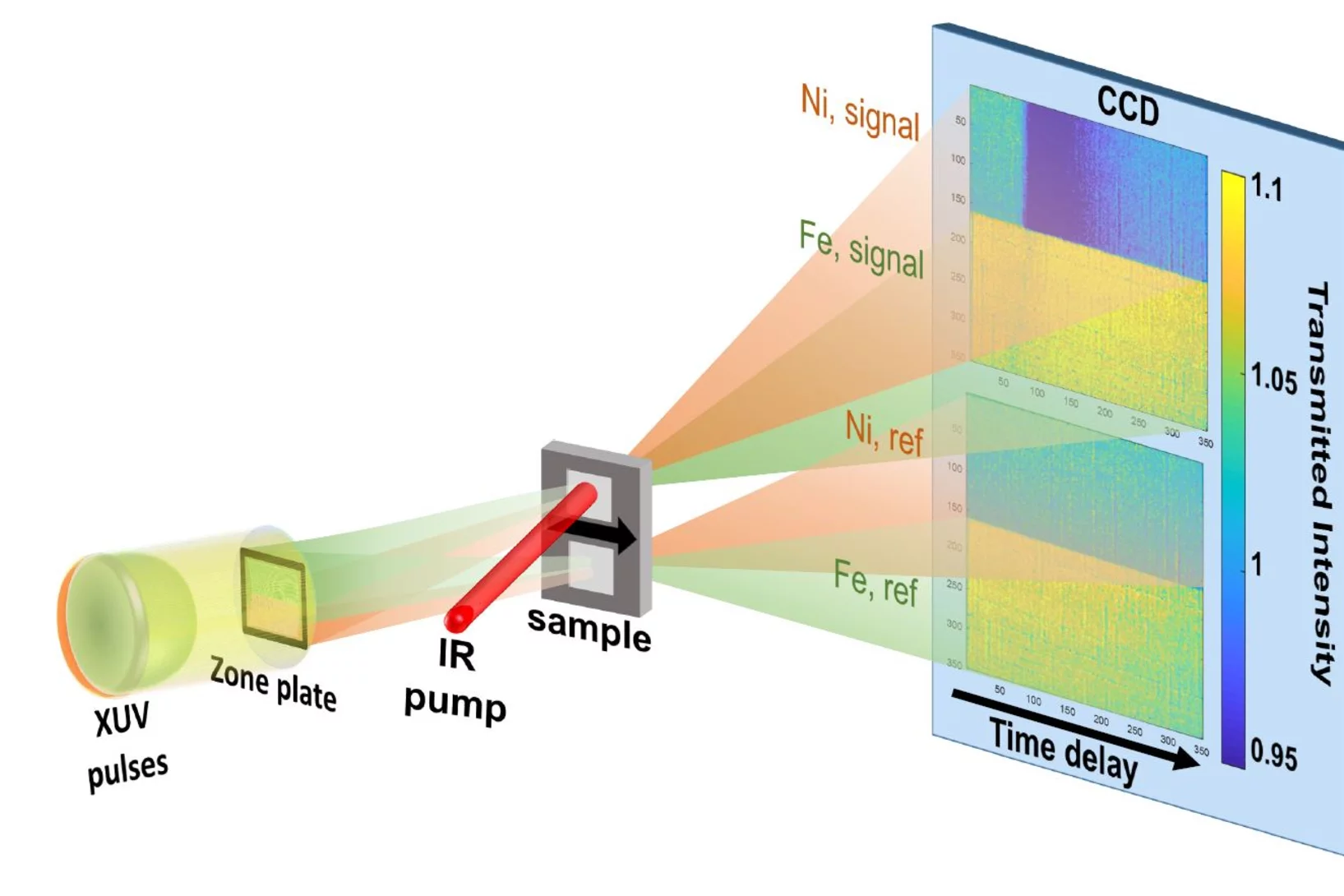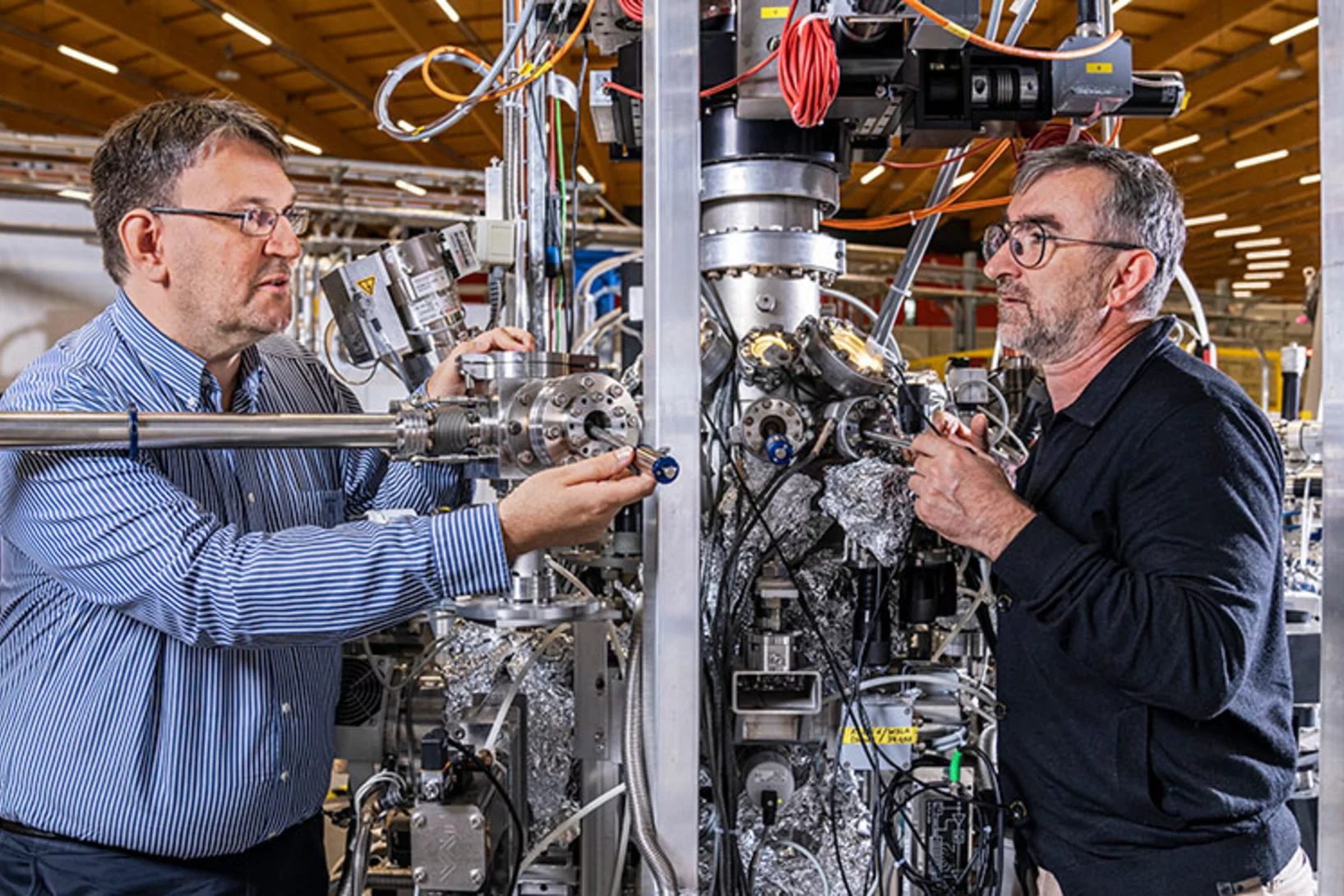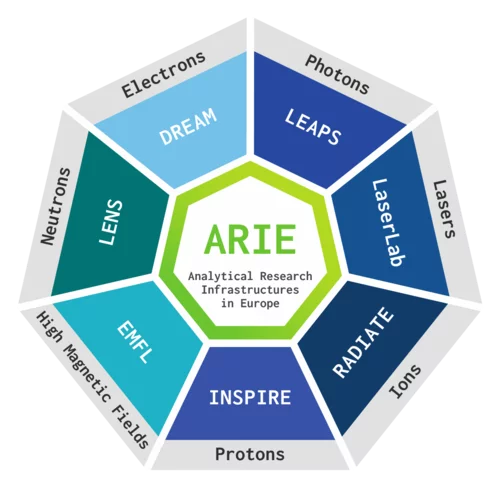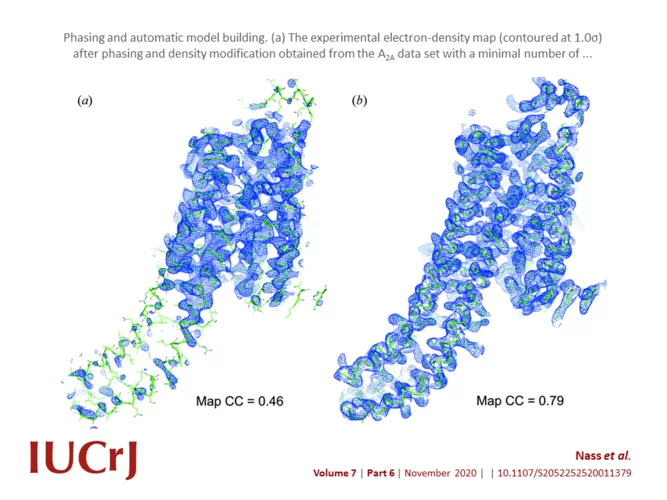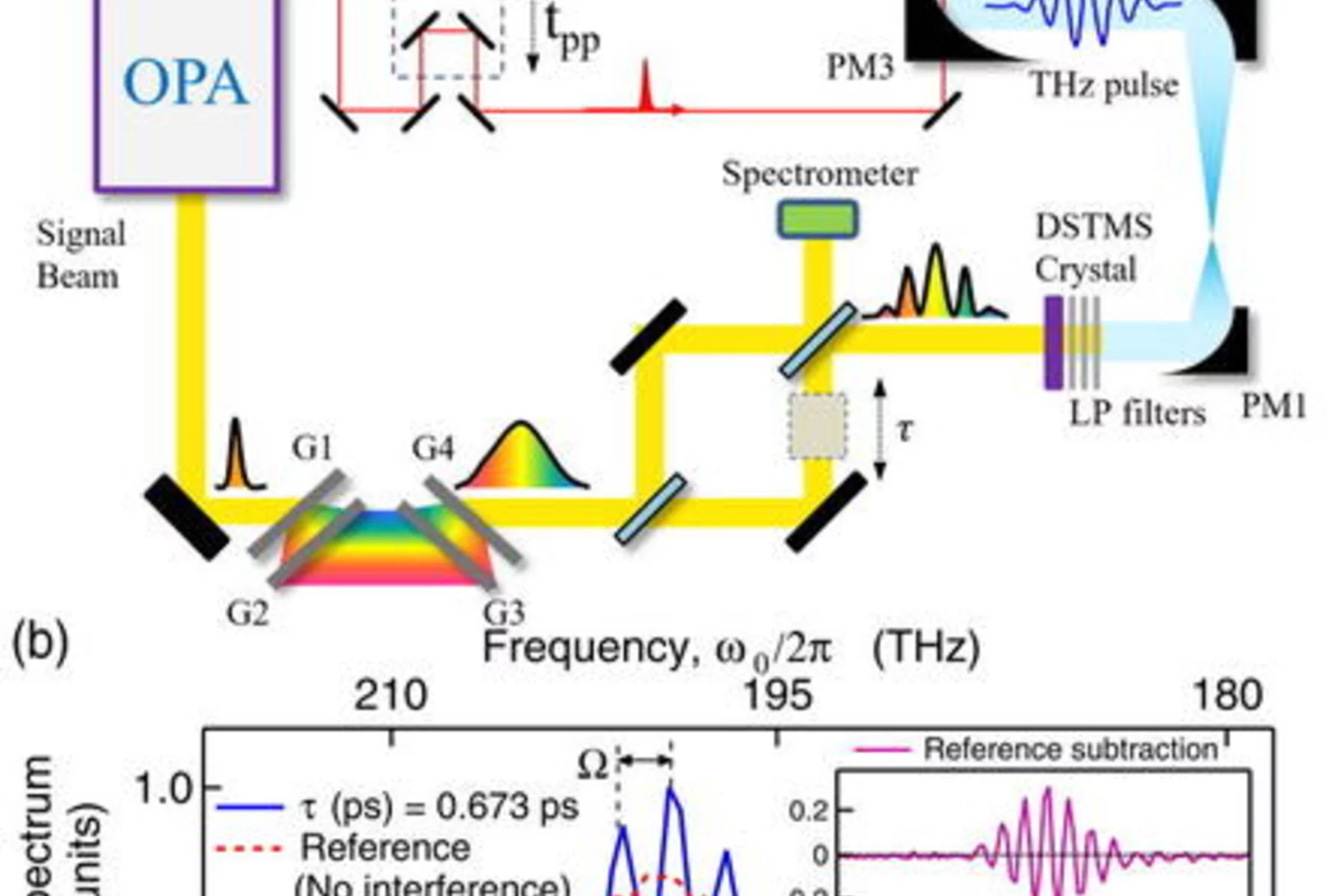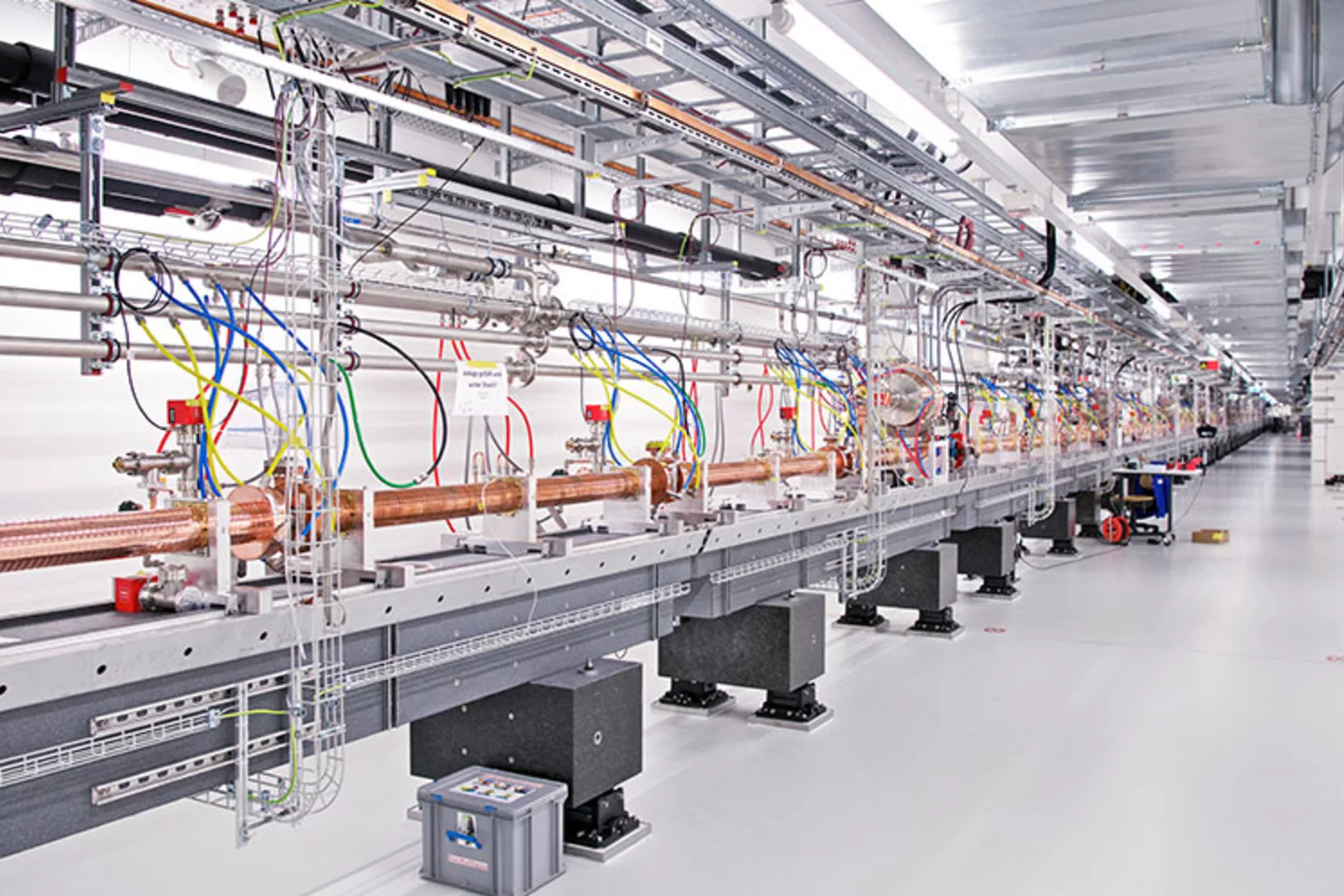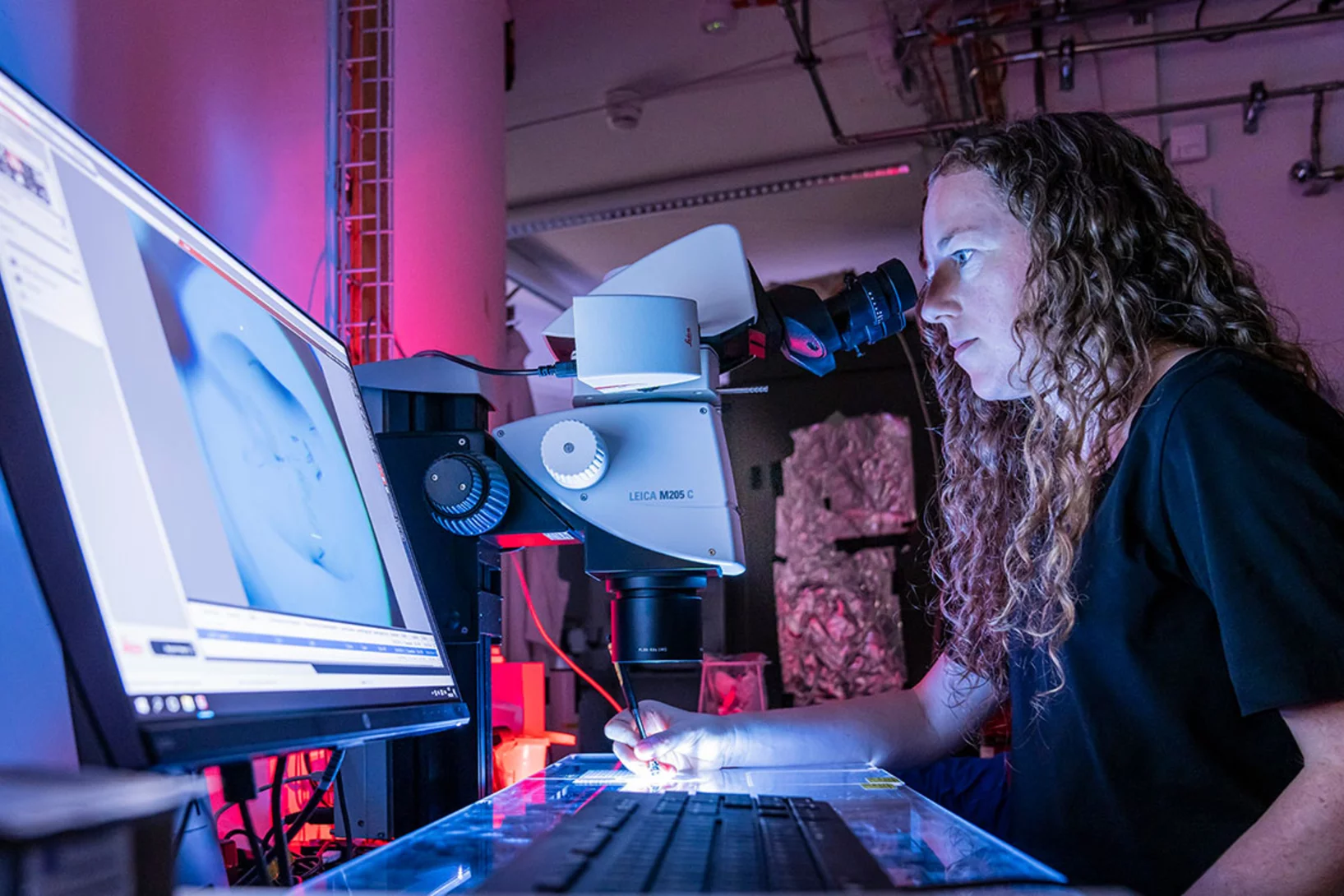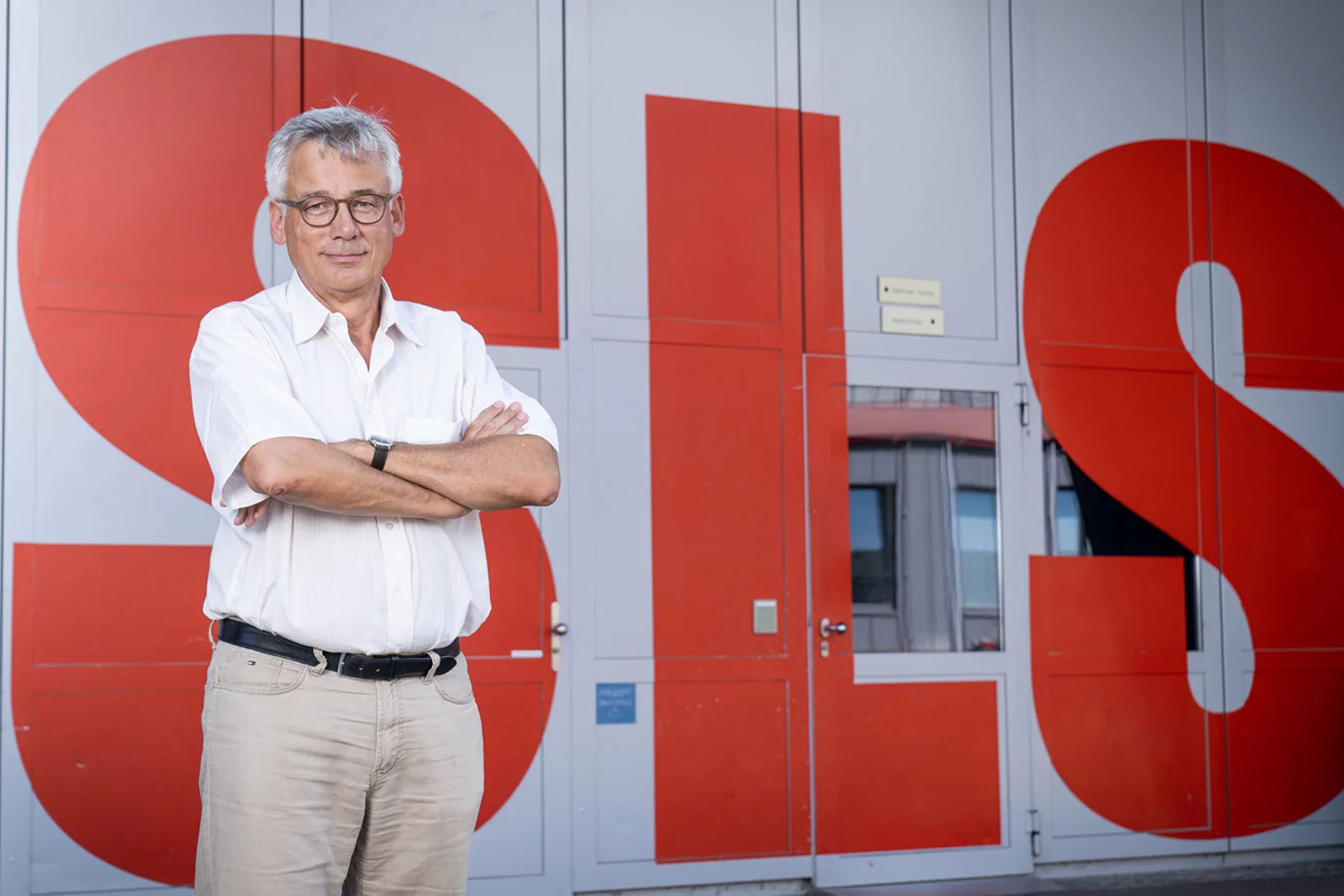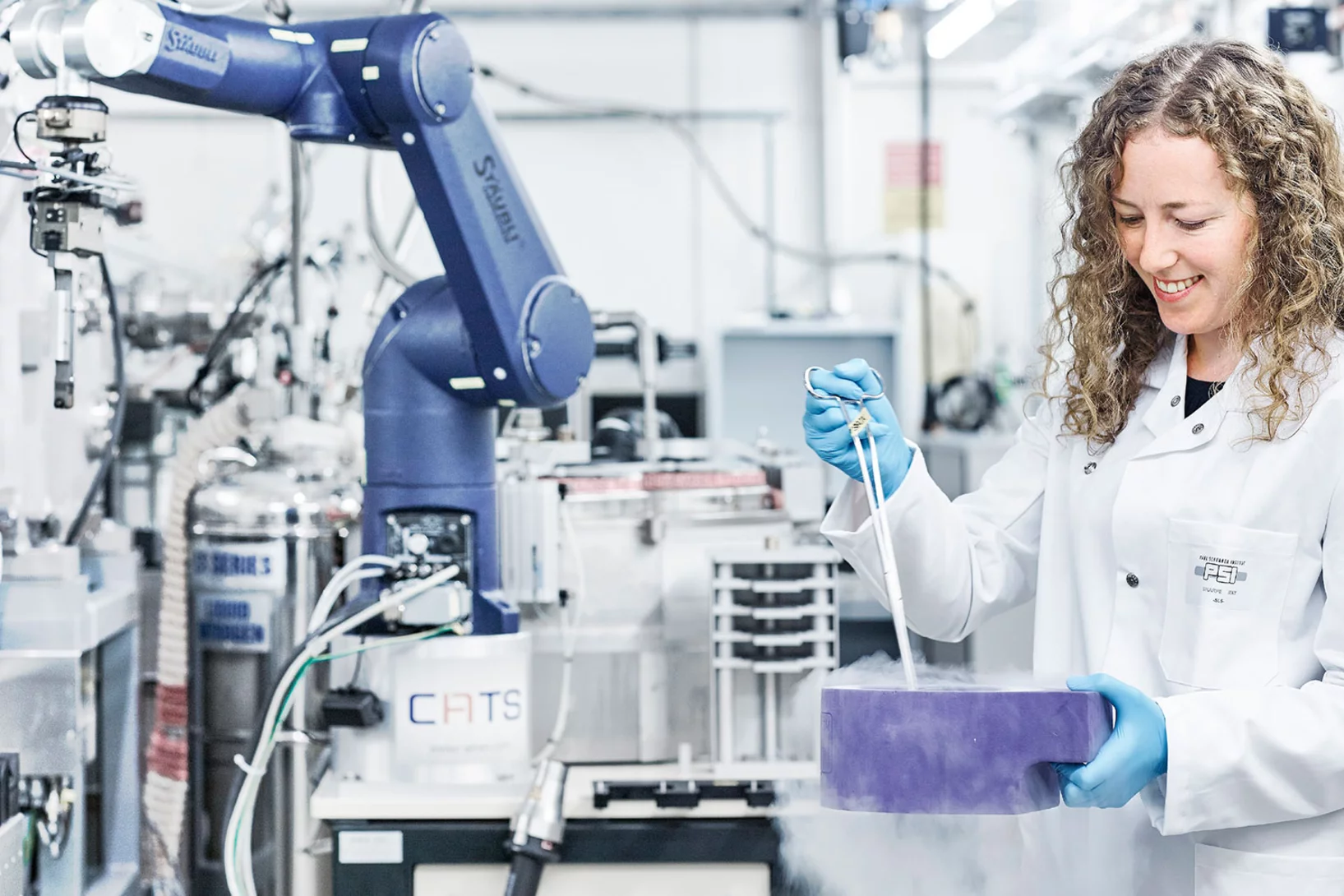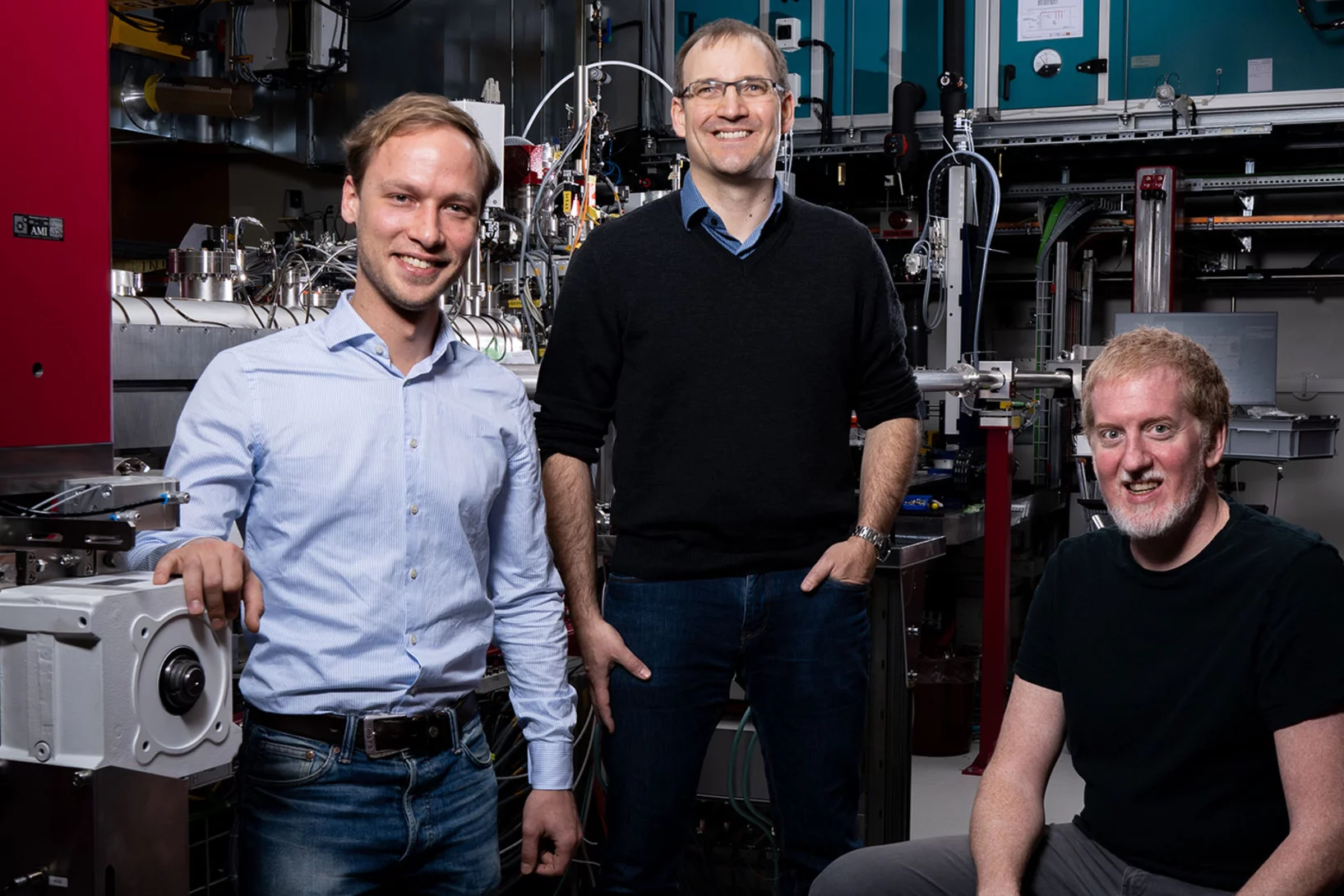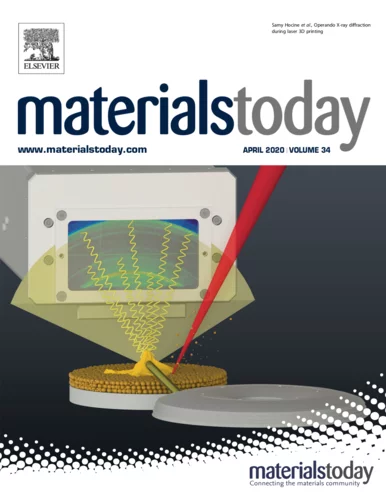Magnetic vortices come full circle
The first experimental observation of three-dimensional magnetic ‘vortex rings’ provides fundamental insight into intricate nanoscale structures inside bulk magnets, and offers fresh perspectives for magnetic devices.
La structure des protéines produisant du verre dans certaines éponges a été élucidée
Des mesures menées à la Source de Lumière Suisse SLS ont permis de comprendre la genèse du seul assemblage cristallin hybride minéral-protéine naturel connu à ce jour. Ce cristal fait partie intégrante du fascinant squelette de verre de certaines éponges.
Ruzicka Prize
The Ružička Prize 2020 goes to Dr. Patrick Hemberger (PSI) for his research on understanding the mechanisms of catalytic fast pyrolysis by unveiling reactive intermediates in heterogeneous catalysts.
BEATS beamline scientist from SESAME synchrotron trains at TOMCAT
TOMCAT welcomes Gianluca Iori, beamline scientist from BEATS - the new beamline for tomography at the SESAME synchrotron in Jordan, to a 3-month training on beamline operations. Gianluca’s visit is part of the Staff Training (BEATS Work Package 2) organized for BEATS scientific staff and SESAME control engineers. BEATS is a European project, funded under the EU’s Horizon 2020 research and innovation programme and coordinated by the ESRF.
World Record: 7 nm Resolution in Scanning Soft X-ray Microscopy
During the past decade, scientists have put high effort to achieve sub-10 nm resolution in X-ray microscopy. Recent developments in high-resolution lithography-based diffractive optics, combined with the extreme stability and precision of the PolLux and HERMES scanning X-ray microscopes, resulted now in a so far unreached resolution of seven nanometers in scanning soft X-ray microscopy. Utilizing this highly precise microscopy technique with the X-ray magnetic circular dichroism effect, dimensionality effects in an ensemble of interacting magnetic nanoparticles can be revealed.
BEATS Project
Mirjam van Daalen, chair of the BEATS Steering Committee
COVID-19 - travel assistance websites launched
The Bio Nano spinout of Prof. Aeppli has launched new travel assistance websites that provide continually updated information on restrictions such as multi-day quarantines imposed on travel between countries, together with the latest pandemic predictions so that travellers can make informed decisions.
SwissFEL: la mégachile des murailles s’y sent comme un poisson dans l’eau
En 2013, lors de la construction du SwissFEL, quelque cinq hectares de forêt ont été défrichés et réaménagés afin de servir de nouvel habitat pour la faune et la flore. Des biologistes et des ingénieurs forestiers viennent de tirer un bilan intermédiaire du succès de ce projet de renaturation. Et ils sont enthousiastes.
Attendre et faire pousser des cristaux
Au PSI, les chercheurs décryptent la structure des protéines de bactéries et de virus. Ces connaissances permettent de développer des médicaments contre des maladies infectieuses. Mais tout d’abord il faut résoudre un problème épineux: la cristallisation de ces molécules.
Harnessing components from the optical internet for programmable spectroscopy
A novel concept for extracting information from spectra where traditional post-processing procedures fail, dubbed ‘software-defined spectroscopy’, offers a fresh approach to high-resolution terahertz spectroscopy. The new method implements an ‘optical comb’ and combines it with a programmable modulator, all using components from the optical internet.
Des mesures au PSI ont permis une compréhension précise des ciseaux génétiques
Le PSI félicite Emmanuelle Charpentier et Jennifer Doudna, lauréates 2020 du Prix Nobel de chimie. Des expériences menées en 2013 à la Source de Lumière Suisse SLS ont permis d’élucider la structure du complexe protéique CRISPR-Cas9.
Two-color snapshots of ultrafast charge and spin dynamics
In a joint research effort, an international team of scientists lead by Emmanuelle Jal (Sorbonne Université) performed a time-resolved experiment at the FERMI free-electron laser to disclose the dynamic behavior of two magnetic element of a compount material in only one snapshot. The X-ray Optics and Applications group developed a dedicated optical element for this experiment that is usable with two different photon energies (colors) simultaneously.
PSI - member of the Microsoft Quantum Network
The PSD is a research partner in the Microsoft Quantum Network, which is a broad community of individuals and organizations collaborating with Microsoft to advance a comprehensive quantum ecosystem, develop practical solutions, and build a robust quantum workforce.
The institutions of scientific excellence are partnering collaboratively with Microsoft to pursue the advancement of quantum computing research, development, and education. The large scale facilities at PSI, in particular the Swiss Light Source, offers unique characterizations techniques to shed light on the secrets of functional materials.
First light in the SwissFEL Maloja endstation
The first endstation at the SwissFEL Athos soft X-ray branch is rapidly developing and on track for first experiments in 2021.
Réaliser un matériau électronique sur mesure
Des chercheurs du PSI ont analysé un matériau qui pourrait entrer en ligne de compte pour de futures applications dans le domaine du stockage de données. Une astuce leur a permis de déformer de manière ciblée la structure cristalline de leur échantillon et de mesurer la manière dont cette déformation influençait les propriétés magnétiques et électroniques.
Analytical Research Infrastructures of Europe (ARIE) join forces to face COVID-19 and other viral and microbial threats
After the joint position paper published as a pre-release in July, in which the Analytical Research Infrastructures of Europe (ARIE) presented their plan to tackle HE Missions, the ARIE enhanced its cross-border, multidisciplinary collaboration to offer Europe a strong and valid weapon against the present COVID-19 challenge and other potential viral and microbial threats.
Advances in long-wavelength native phasing at X-ray free-electron lasers
Long-wavelength pulses from the Swiss X-ray free-electron laser (XFEL) have been used for de novo protein structure determination by native single-wavelength anomalous diffraction (native-SAD) phasing of serial femtosecond crystallography (SFX) data.
Narrow-band and tunable intense terahertz pulses for mode-selective coherent phonon excitation
We generate frequency-tunable narrow-band intense fields in the terahertz (THz) range by optical rectification of a temporally modulated near-infrared laser pumping a nonlinear organic crystal.
«Forschung online erleben»: Mittendrin statt nur dabei
Erstmals Live-Rundgang durch eine Grossforschungsanlage per Video-Stream. Am 9. September haben Interessierte exklusiv die Möglichkeit, sich von Experten des PSI durch den neuen Freie-Elektronen-Röntgenlaser SwissFEL führen zu lassen und zu erfahren, welche Rätsel der Materie und der Natur sich damit lösen lassen.
Question de liaison
Au PSI, des chercheurs passent au crible des fragments de molécules pour voir si ces derniers se lient à certaines protéines importantes du coronavirus SARS-CoV-2 afin de les neutraliser. A partir de ces informations, ils espèrent trouver une réponse sur le profil potentiel d’un médicament efficace.
«Nous préparons la SLS à l’avenir»
La Source de Lumière Suisse SLS doit faire l’objet d’une mise à jour afin qu’elle puisse aussi permettre une recherche d’excellence au cours des prochaine décennies. Dans cette interview, Hans Braun, chef du projet SLS 2.0, explique en quoi consiste cet upgrade.
Recherche sur le Covid-19: stratégie antivirale à double effet
Des scientifiques de Francfort ont identifié un éventuel point faible du virus SARS-CoV-2. Ils ont effectué une partie de leurs mesures à la Source de Lumière Suisse SLS du PSI. Leurs résultats de recherche paraissent cette semaine dans la revue spécialisée Nature.
The tiniest secrets of integrated circuits revealed
New research has demonstrated that the secrets of the tiniest active structures in integrated circuits can be revealed using a non-destructive imaging technique. The breakthrough required the efforts of an international team of scientists from JKU and Keysight Technologies (Austria), ETH/EPFL/PSI and IBM Research - Europe (Switzerland) and from UCL (UK).
Cherned up to the maximum
In topological materials, electrons can display behaviour that is fundamentally different from that in ‘conventional’ matter, and the magnitude of many such ‘exotic’ phenomena is directly proportional to an entity known as the Chern number. New experiments establish for the first time that the theoretically predicted maximum Chern number can be reached — and controlled — in a real material.
Analytical Research Infrastructures as key resources for the five Horizon Europe Missions
Moon-shot missions, such as those of Horizon Europe, require exceptional solutions, and the world-leading Analytical Research Infrastructures of Europe (ARIEs) are one of the key places those solutions can be sought. The ARIE Joint Position Paper highlighting how the common, complementary approach will help address the societal challenges of the Horizon Europe Missions framework programme was presented today.
Vers le Soleil et au-delà
Le PSI participe à des projets de recherche spatiale. C’est ainsi que s’enrichit le savoir sur notre système solaire, mais aussi que se renforce la renommée de la Suisse en tant que développeur fiable d’équipement spatial de pointe.
Grosser Rat bewilligt 2,4 Millionen für Technologiezentrum Anaxam
Der Kanton Aargau unterstützt das Technologietransferzentrum Anaxam in Villigen für die Dauer von vier Jahren mit insgesamt 2,4 Millionen Franken. Der Grosse Rat hat am Dienstag in Spreitenbach den entsprechenden Kredit mit 124 zu 3 Stimmen bewilligt.
Elucidation du mécanisme d’une pompe à sodium contrôlée par la lumière
Des chercheurs de l’Institut Paul Scherrer PSI ont réussi une première: réaliser des prises de vue d’une pompe à sodium en action, plus précisément d’une pompe à sodium de cellules bactériennes contrôlée par la lumière. Ces éléments de connaissance sont prometteurs pour le développement de nouvelles méthodes dans le domaine de la neurobiologie. Pour leurs analyses, les chercheurs ont utilisé le nouveau laser à rayons X à électrons libres SwissFEL.
First MX results of the priority COVID-19 call
The Dikic group at the Goethe University in Frankfurt am Main, Germany has published the first results following the opening of the "PRIORITY COVID-19 Call” at SLS.
Operando X-ray diffraction during laser 3D printing
Ultra-fast operando X-ray diffraction experiments reveal the temporal evolution of low and high temperature phases and the formation of residual stresses during laser 3D printing of a Ti-6Al-4V alloy. The profound influence of the length of the laser-scanning vector on the evolving microstructure is revealed and elucidated.



